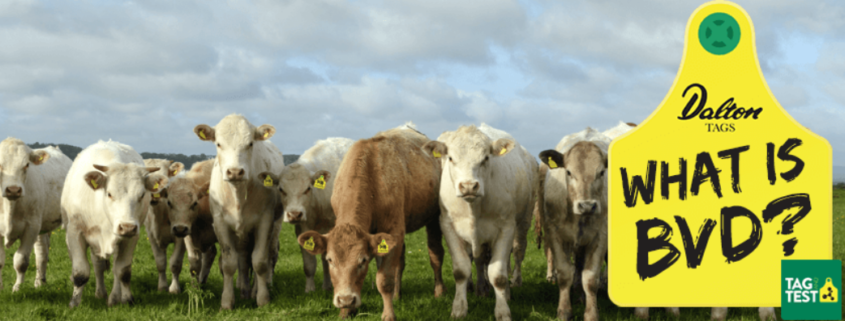What is BVD?
Which tags does Dalton Tags recommend for BVD Testing?
Dalton Tags recommend the FLEXO Tag & Test system. It is a practical and simple system to use and is completely tamperproof from farm to laboratory. FLEXO Tissue Sample Tags identifies the sample by the unique individual 2D barcode number which is pre-printed on the sample tube. Tag & Test can be purchased from Dalton Tags with or without the test. Dalton Tags recommends CIS (Cattle Information Society) Labs for testing. Dalton Tags are extremely confident the FLEXO system is the best available. Please ring: 01636 700990, visit our websitewww.daltontags.co.ukor email sales@daltontags.co.uk for further information.
Does my vet need to attend?
You can test for BVD by yourself. FLEXO Tissue Test Tags are available direct from Dalton Tags or through your local merchant. They are quick, easy and accurate and the most cost effective way to test for BVD – remember you can have them with a test included.
What are the symptoms of BVD in adult cattle?
They can vary but include; fever, lethargy, loss of appetite, ocular discharge, nasal discharge oral lesions, diarrhoea decreasing milk production, coughing and poor fertility. Chronic infection may lead to signs of mucosal disease. This animal may have become infected from their mother whilst in the womb, from another animal or even the virus picked up from infected clothing, equipment or a building and can survive up to four weeks out of body.
What are the symptoms of BVD in newly born calves?
Calves can be stillborn or die soon after birth. They can suffer from wide stance, tremors, stumbling about with lack of coordination (Ataxia) and failure to suckle. This can indicate they have been infected from their mother and are what is known as Persistently Infected (PI) and they need to be isolated, retested, then culled and not sold on.
I do not seem to have a problem so why should I worry?
BVD can be the underlying cause of a range of issues in your herd that may on the surface not seem significant; more ‘empty’ cows than you should have indicating fertility problems, the odd ‘poor doer’ which never amounts to much, or scours or respiratory problems here and there –‘all part of livestock farming’ but which may be caused by BVD silently taking your time and profits.
What is Mucosal disease?
This is often triggered by BVD and animals affected often have scours often containing blood, a high temperature and mucosal lesions in the mouth, as well as ulcerations at the muzzle, the nose, the rim of the hoof. It often leads to death of the animal.





